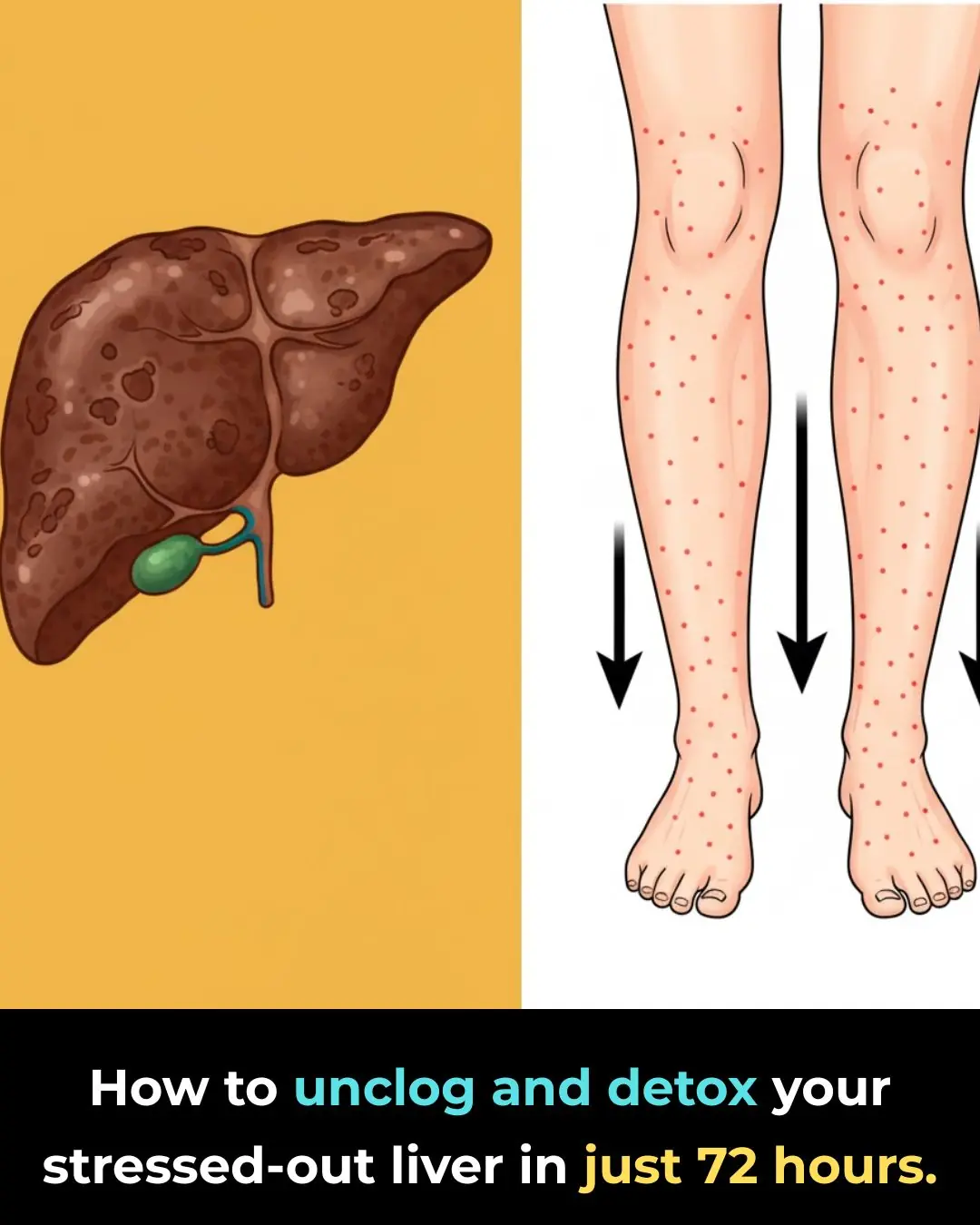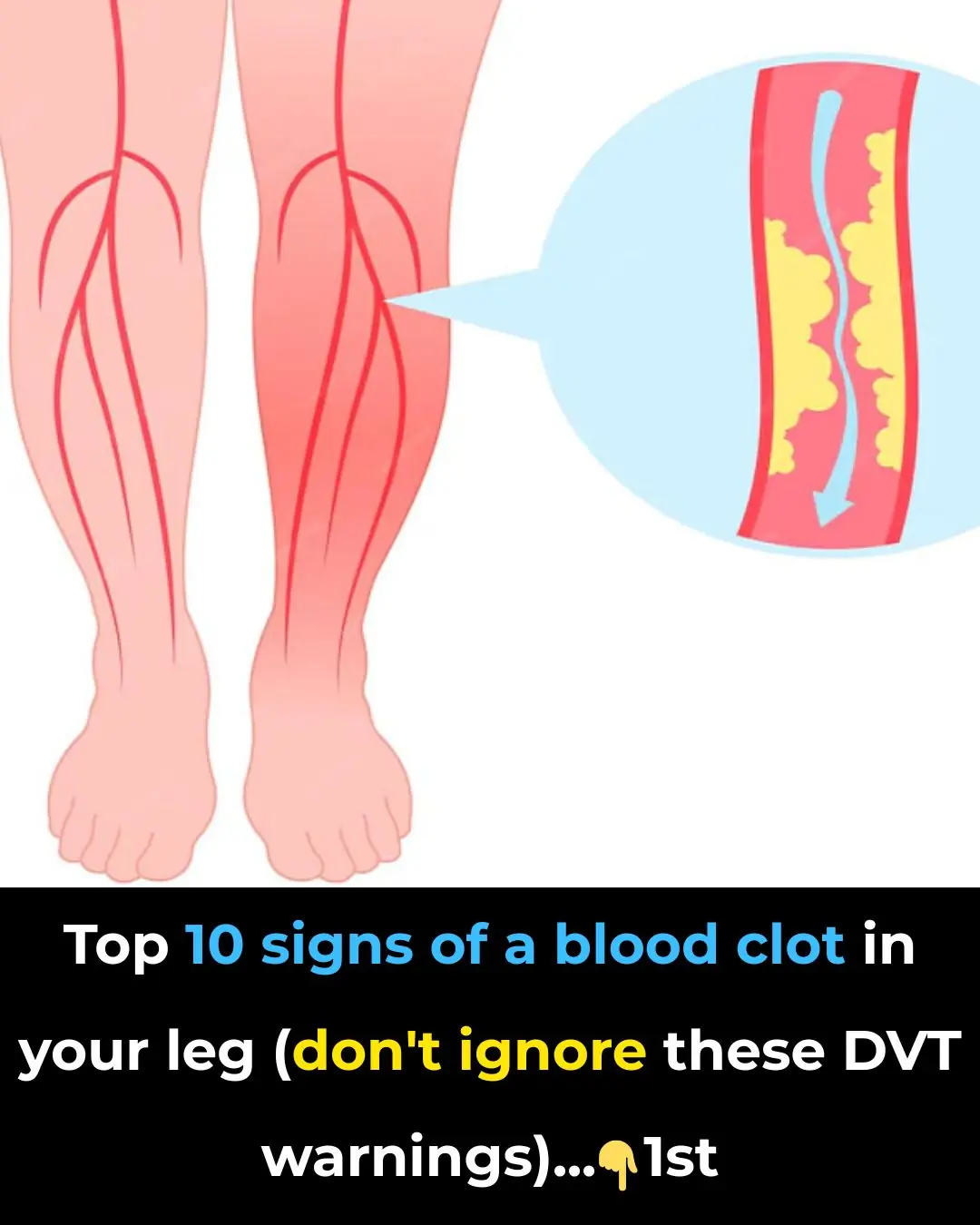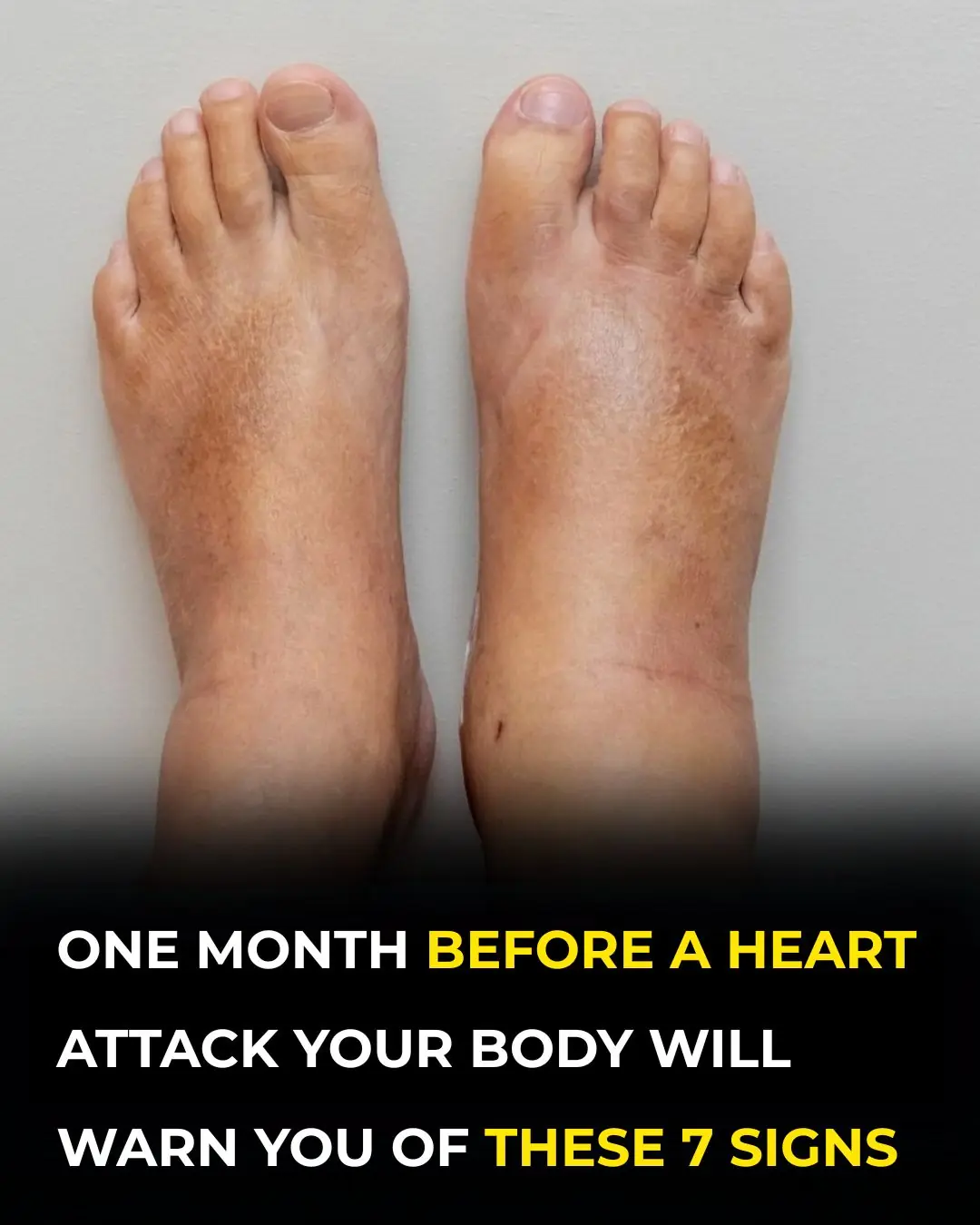
Don’t ignore your legs: the surprising early signs of pancreatic cancer
Did you know that one of the earliest clues of a deadly cancer might not come from your abdomen at all—but from your legs? It sounds strange, but growing medical evidence shows it’s true. Pancreatic cancer, often called the “silent killer,” is notorious for developing quietly. Its early symptoms tend to be subtle, vague, and easily mistaken for common digestive or stress-related issues. By the time most people seek medical help, the disease is already advanced and far more difficult to treat.
But what if your body was sending out a warning signal much earlier than expected—one happening far away from your pancreas? For a surprising number of people, the very first sign of underlying pancreatic cancer appears in the legs, and it often shows up long before the typical abdominal symptoms.
In this expanded guide, we’ll explore these unexpected leg symptoms, explain the biological reason behind them, and break down the other early warning signs everyone should know. With a cancer as aggressive as pancreatic cancer, early recognition can make a life-changing difference.
Key Takeaways
-
Pancreatic cancer is difficult to diagnose early, which contributes to its low survival rate. Symptoms usually become obvious only once the disease has spread.
-
Your legs may hold early clues, most commonly linked to a condition called Deep Vein Thrombosis (DVT)—a blood clot developing in a deep vein.
-
Four leg symptoms to watch for:
-
Persistent, unexplained leg pain
-
Sudden swelling in one leg
-
Redness or discoloration
-
Warmth in the affected area
-
-
These occur because some cancers trigger a hypercoagulable state, meaning the blood becomes more prone to clotting.
-
Other early signs include jaundice, abdominal or back pain, unexpected weight loss, and new-onset diabetes.
-
If you notice these symptoms—especially without a clear cause—it’s important to speak with a healthcare professional promptly.
1. Persistent, Unexplained Leg Pain
Leg pain is common, which is why most people brush it off. Maybe you exercised too hard, twisted something, or simply sat awkwardly. But the type of pain that may signal a deeper issue is different—it’s persistent, localized, and doesn’t respond to rest, stretching, or normal pain relievers.
This type of pain is a classic symptom of Deep Vein Thrombosis (DVT): a blood clot forming in a deep vein, usually in the calf, thigh, or pelvis. What makes this relevant to pancreatic cancer?
Many cancers—especially pancreatic adenocarcinoma—release procoagulant substances into the bloodstream. These chemicals dramatically increase the likelihood of clot formation. This phenomenon is known as Trousseau’s syndrome of malignancy, a recognized early complication of hidden cancers.
In some patients, an unprovoked DVT is the very first noticeable sign of pancreatic cancer.
If you experience nagging, one-sided leg pain with no clear explanation, don’t ignore it. A simple ultrasound of the leg veins can confirm whether a clot is present and guide further evaluation.
2. Sudden Swelling in One Leg (Edema)
Another hallmark symptom of DVT is sudden, significant swelling in one leg. This happens because the clot blocks blood flow, creating a pressure buildup that pushes fluid into surrounding tissues. This swelling is usually:
-
Unilateral (only one leg)
-
Progressive over hours or days
-
Accompanied by heaviness or tightness
You may notice your socks leave deep marks, one pant leg feels tighter, or your leg simply looks different from the other. Pressing a fingertip firmly into the swollen area may create a temporary dent—a sign known as pitting edema.
While bilateral swelling is less common, it can occur if a large abdominal tumor compresses a major vein like the inferior vena cava. This is rare but shows how tumors can influence circulation far beyond their immediate location.
3. Redness or Skin Discoloration
Redness, or sometimes a bluish-purple tint, can appear over the area of a DVT. This occurs because the body mounts an inflammatory response to the clot. Increased blood flow brings immune cells to the site, creating:
-
Redness
-
Warmth
-
Shiny or tight-looking skin
This discoloration, especially when appearing with pain and swelling, is an unmistakable sign that something is interfering with the circulation in that leg. It should never be ignored, as it can escalate quickly.
4. A Noticeable Feeling of Warmth in the Leg
This localized warmth is another direct result of inflammation. The skin over the affected vein may feel distinctly hotter than the surrounding skin or the opposite leg. While you may not have a full-body fever, this small patch of heat is significant.
When pain, swelling, redness, and warmth all occur together, you have the classic four signs of DVT. And because pancreatic cancer can cause blood to clot more easily, this combination of symptoms—especially without any obvious trigger—is a loud alarm bell.
DVTs are dangerous on their own. If a clot breaks off, it can travel to the lungs and cause a pulmonary embolism (PE). Symptoms of PE include:
-
Sudden shortness of breath
-
Sharp chest pain
-
Rapid heart rate
-
Coughing up blood
A PE is a medical emergency, which is why recognizing DVT early is so critical.
5. Additional Early Signs of Pancreatic Cancer
While leg symptoms are powerful but often overlooked clues, pancreatic cancer still presents with more traditional symptoms. Knowing these can help you connect the dots early.
• Abdominal or Back Pain
Often described as a dull, radiating pain that worsens after eating or while lying down. This occurs when the tumor presses on nearby nerves or organs.
• Jaundice
A yellowing of the skin and eyes caused by blockage of the bile duct. This may be accompanied by:
-
Very dark urine
-
Pale, greasy stool
-
Itchiness
• Unexplained Weight Loss & Loss of Appetite
The tumor can interfere with digestion and enzyme production, leading to poor nutrient absorption. Patients often feel full quickly or experience nausea.
• New-Onset Diabetes
Sudden diabetes in someone over 50—especially without weight gain or family history—can be an early indicator. Tumors can disrupt the pancreas’s insulin-producing cells long before they cause other symptoms.
Conclusion: Early Signals Matter—Pay Attention to Your Legs
Your body has remarkable ways of warning you when something is wrong. Pancreatic cancer may be silent at first, but the leg symptoms caused by DVT are anything but subtle. Persistent pain, swelling, redness, and warmth shouldn’t be dismissed or self-diagnosed as muscle strain or aging.
These signs might be the earliest opportunity to detect a dangerous condition while treatment is still more feasible.
If you’re experiencing any of the symptoms described—especially if they appear suddenly, affect only one leg, or accompany other early signs of pancreatic cancer—seek medical attention promptly. Even if the cause turns out to be unrelated, ruling out serious issues early is always the safest choice.
Awareness can’t prevent pancreatic cancer, but it can lead to earlier detection—and earlier detection can save lives.
News in the same category


Drink one cup daily of this juice to UNCLOG arteries?

9 cancer warning signs your body is sending you (don’t ignore these!)

Texas reports 4× surge in whooping cough cases — health officials issue statewide alert

Throat problems may be warning you about hidden blood pressure issues, study finds

Top 10 signs of a BLOOD CLOT in your leg (prevent Deep Vein Thrombosis)

Say Goodbye to Parasites, Cholesterol, High Blood Pressure, and Poor Circulation With This 7-Day Homemade Drink

Drink This 2X a Day to Remove Uric Acid Before it Crystallizes in Your Joints and Becomes Painful

Lower blood sugar naturally by training just 2 leg muscles

3 Food Combo to Strengthen Your Heart

What Your Belly Is Trying to Tell You

1/4 teaspoon reverses gut inflammation & cleanses liver toxins

Vitamin D3 cuts second heart attack risk by half

One Month Before A Heart Attack, Your Body Will Warn You Of These 7 Signs

4 vitamins to reverse neuropathy and damaged nerves – relieve foot & hand pain fast!

1st death linked to “meat allergy” spread by ticks, doctors confirm

Ignite Your Day: Eggs + Coffee for Unstoppable Stamina & Vitality

How to Effectively Remove a Painful Ingrown Toenail WITHOUT Having To Go To The Doctor

This Is What Happens To Your Lungs When You Dry Laundry Indoors
News Post

How To Unclog And Detox Your Stressed-Out Liver In Just 72 Hours

Why should you drop a clove of garlic into the toilet at night?

4 ways to boil chicken without water

5 Best Collagen Toners For Wrinkle Free Glowing Skin

Rice water is like gold in the house if you know how to use it for these things

7 Days Indian Glass Skin Challenge

I Just Discovered the Benefits of Hanging a Bottle Cap on a Keychain

4 Dangerous Mistakes When Using an Air Fryer: Risks of Food Poisoning, Cancer, and Fires

Coffee Baby Oil Vitamin E Formula: Collagen Cream For Wrinkle Free Glowing Skin

Lady places cup of vinegar into microwave. Here’s the genius reason why

I had no idea this was a thing

6 ways to use wind oil to help repel mosquitoes extremely well

10 odd home fixes you’ll wish you learned years ago

12 weird but genius ways to unclog things naturally

Put borax on wax paper and slide it under fridge. Here's why

How to Grow Cucumbers in Pots for Heavy Harvests All Season Long

How to make steamed pears with rock sugar is both delicious and nutritious
Let’s take a look at some tips to help keep your kitchen space clean and free of unpleasant odors.

Drinking Roasted Black Bean and Ginger Tea for 7 Days Brings 3 Major Health Benefits
